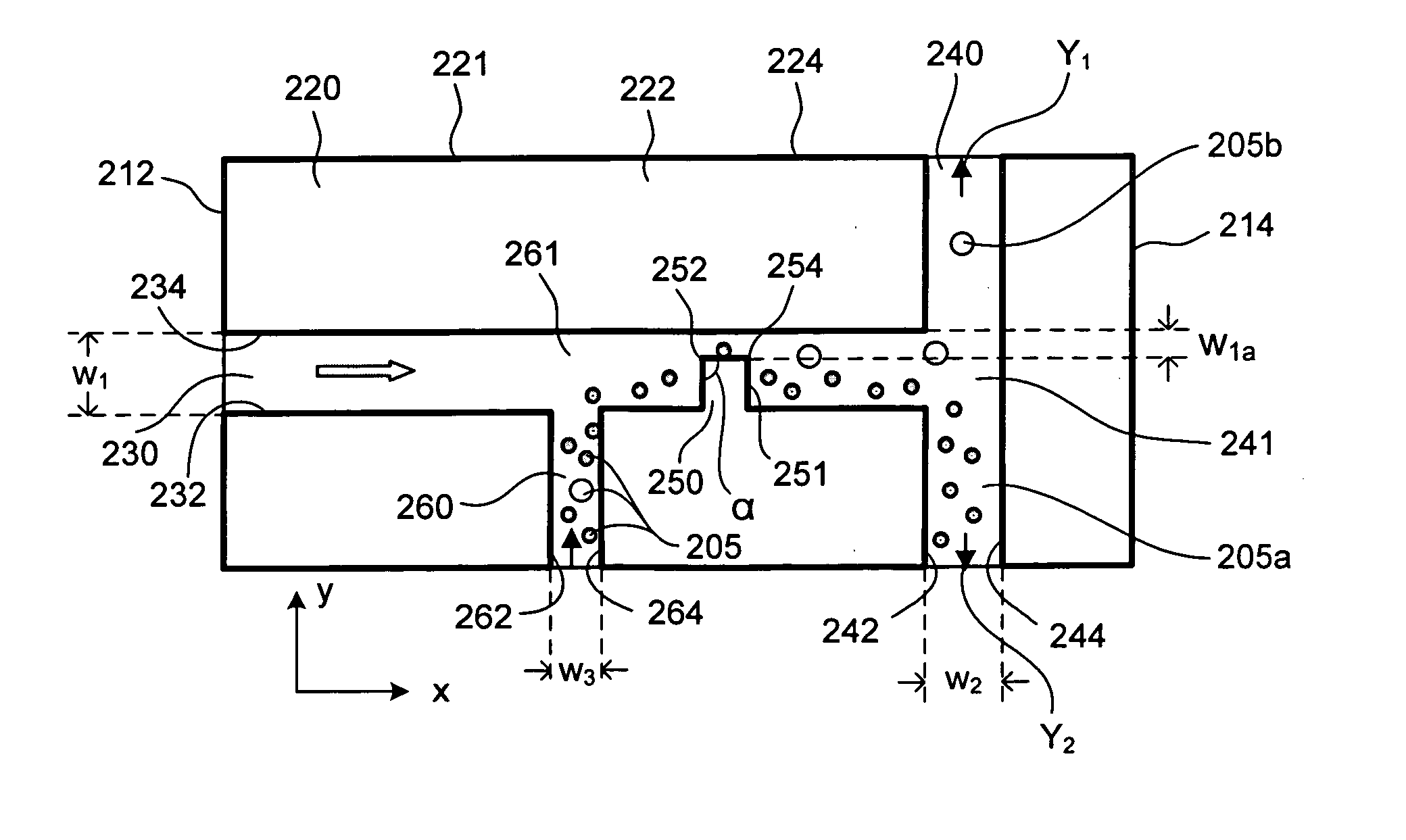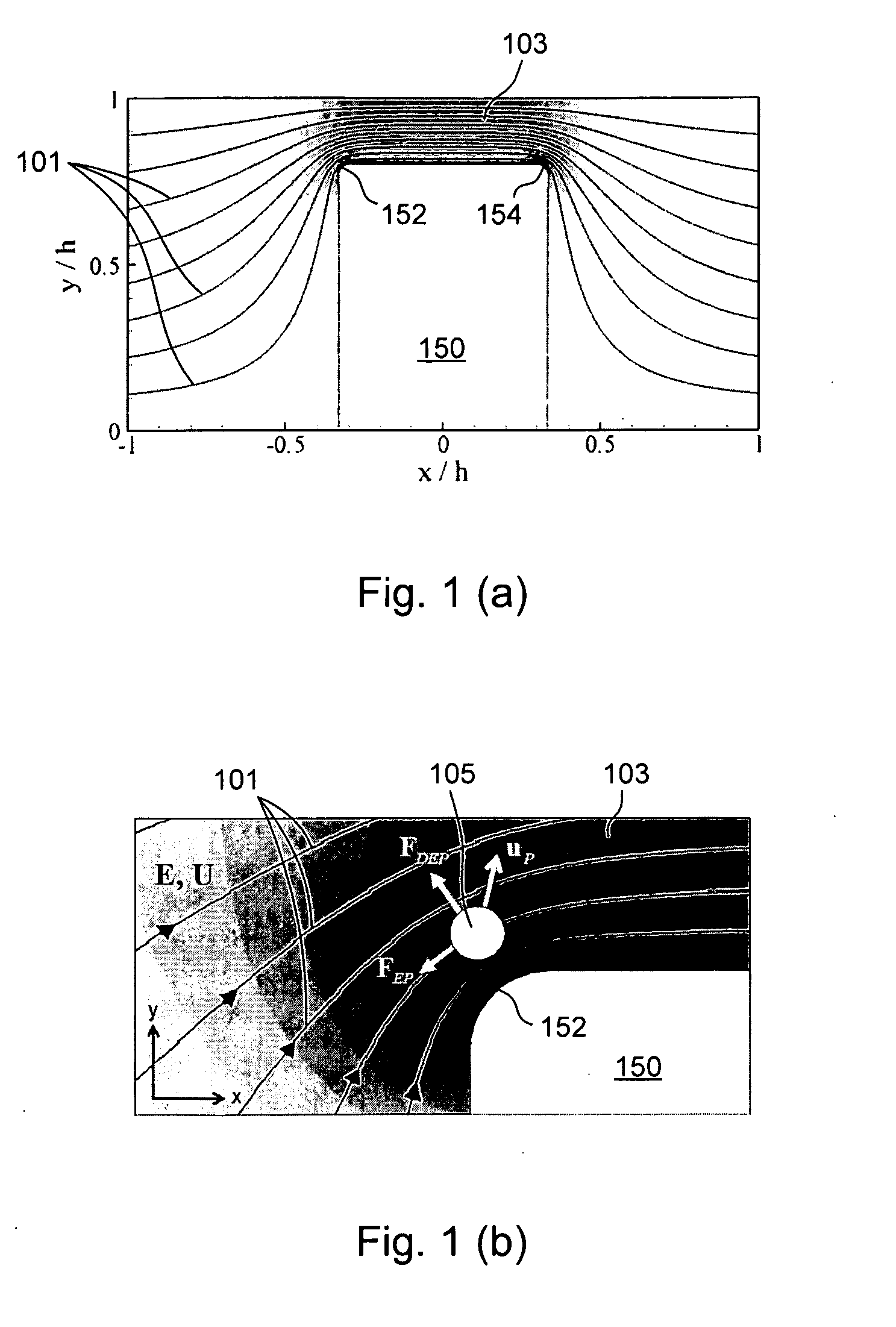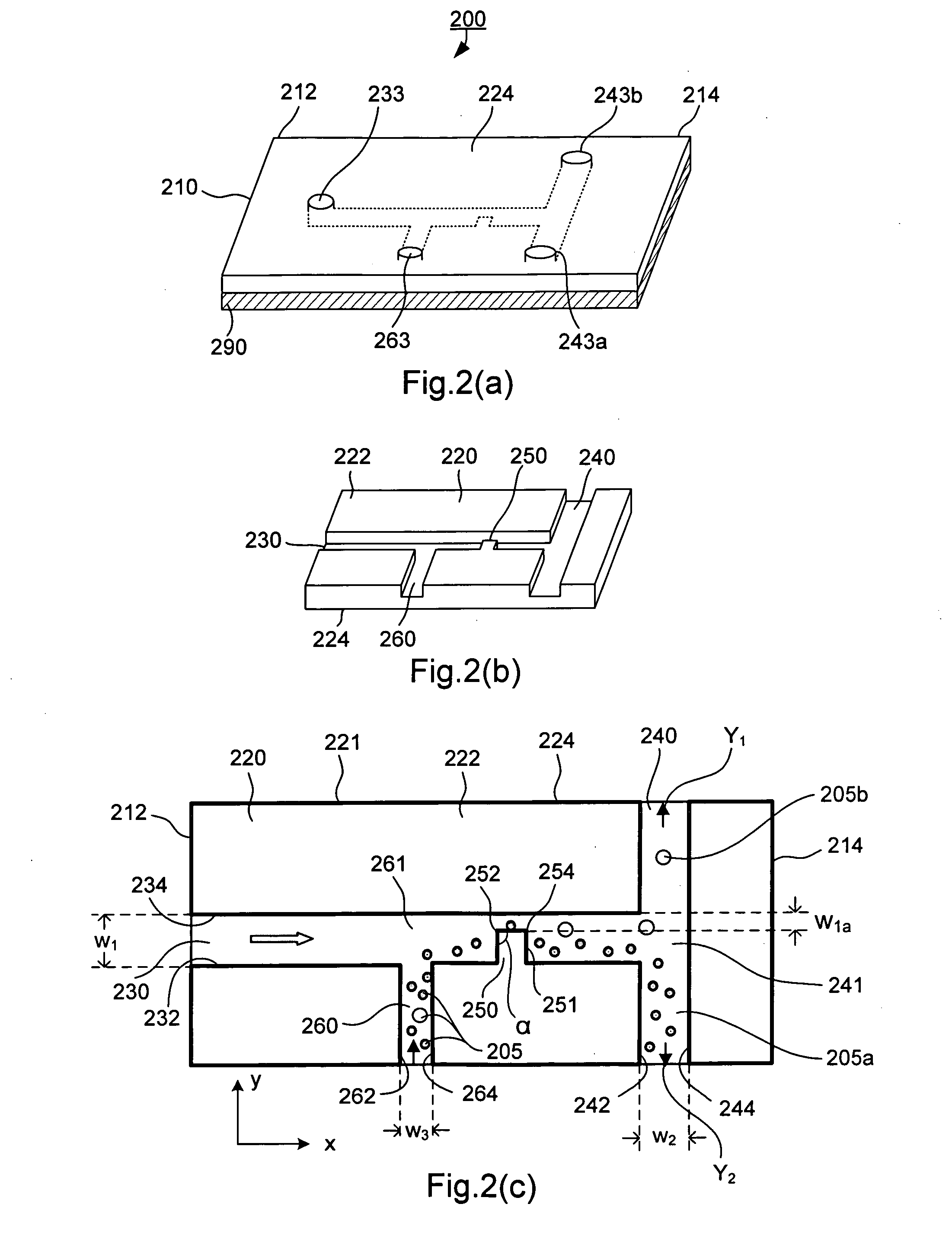DC-dielectrophoresis microfluidic apparatus, and applications of same
a microfluidic and dielectrophoresis technology, applied in the field of microfluidics, can solve the problems of inability to separate white blood cells, major limitation in the development and application of lab-on-chip technology, and use of centrifuges,
- Summary
- Abstract
- Description
- Claims
- Application Information
AI Technical Summary
Benefits of technology
Problems solved by technology
Method used
Image
Examples
example 1
[0109]The present invention has been used to separate different white blood cells. In the experiments, a 50 μl volume of blood was mixed with 50 μl of a Red Blood Cell Lysis Buffer (Caltag, Burlingame, Calif.) to lyse the red blood cells, and then diluted with 500 μl of de-ionized water (this protocol fixes WBC in the sample, and lyses RBC). 10 μl of this sample solution was loaded to the sample well on the chip by a micro-pipette. 10 μl of this sample solution contains approximately 8,000 cells (granulocytes, monocytes, and lymphocytes) and approximately 100,000 small components (platelets, RBC debris, etc). By adjusting the applied voltages at different electrodes inserted in the wells at the ends of the microchannels, the inventor separated the white blood cells at a specified cell size, which is corresponding to a predetermined diameter for the cell such as 10 μm as shown in FIG. 3 as an example.
[0110]The applied electrical field has negligible effects on the cells, other than g...
example 2
[0139]FIG. 11 shows trajectories of 6 μm and 15 μm polystyrene particles by superimposing a series of sequential microscopy images obtained from an experiment. The microchannel (made of PDMS and glass by soft lithography) in this case was 300 μm in width and 40 μm in depth (perpendicular to the paper). The narrow section of the microchannel was 60 μm in width. We found that when the mixed particles approached the narrow gap from the side of the hurdle, the DC-DEP effect produced the best separation. As set forth above, when larger particles and smaller particles move closely over the corner of the hurdle where the non-uniform electrical field gradient is the strongest, the larger particles are subject to a stronger DEP force and are pushed further away from the corner compared with smaller particles. Consequently the larger particles and smaller particles follow separate trajectories after passing the hurdle. Applying appropriate voltages to induce the downstream flows to the two se...
PUM
| Property | Measurement | Unit |
|---|---|---|
| angle | aaaaa | aaaaa |
| size | aaaaa | aaaaa |
| size | aaaaa | aaaaa |
Abstract
Description
Claims
Application Information
 Login to View More
Login to View More - R&D
- Intellectual Property
- Life Sciences
- Materials
- Tech Scout
- Unparalleled Data Quality
- Higher Quality Content
- 60% Fewer Hallucinations
Browse by: Latest US Patents, China's latest patents, Technical Efficacy Thesaurus, Application Domain, Technology Topic, Popular Technical Reports.
© 2025 PatSnap. All rights reserved.Legal|Privacy policy|Modern Slavery Act Transparency Statement|Sitemap|About US| Contact US: help@patsnap.com



